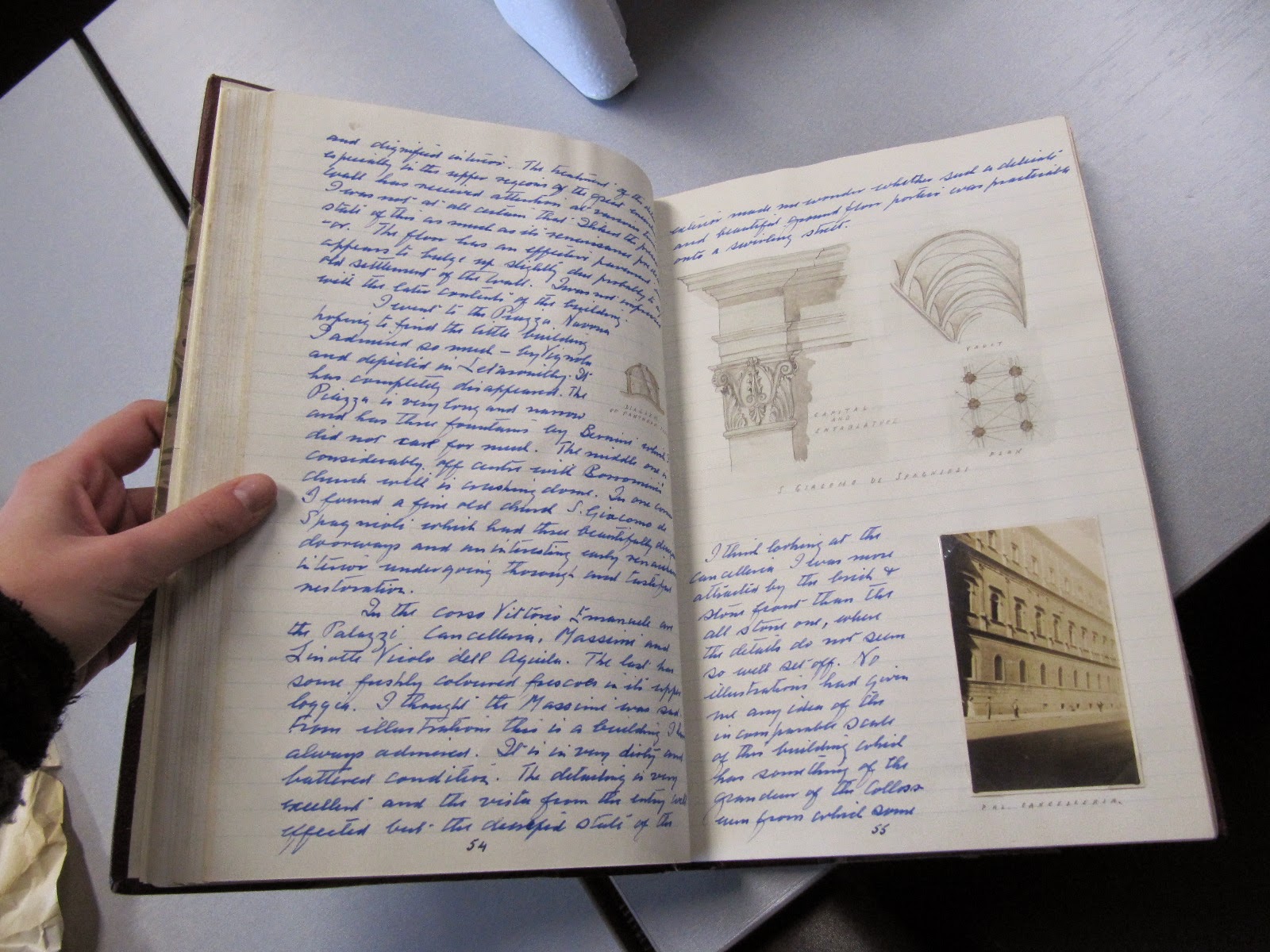 |
| Cute woodland critters |
A colleague at work recently told me I had to visit Burton Agnes Hall at Christmas as the family
that live there always decorate for the occasion. So last Saturday I roped a friend into making the trip and we weren't disappointed. It was a magical world of lights, snowmen and woodland critters be-glittered for the occasion (not real ones I hasten to add!).
Secretly though I
had a second reason for going – I've wanted to see the Long Gallery, restored by FJ, since beginning this project back in January. So before we set out I had a look over the Burton Agnes files (not a crime novel but the actual files from
the archive!) to remind myself of what work had been done by FJ for the owner Marcus Wickham-Boynton.
This is what I discovered…
 |
| View of the Gardens taken from the Long Gallery |
The firm’s
connection with Burton Agnes Hall goes back to FJ’s early years as an architect
when he was just establishing his practice. Some of the earliest work carried
out at the Hall included designs for door furniture and bookcases in 1947-1948.
It also included the beginning of the restoration of the Long Gallery with the
initial restoration of the Old Picture Gallery in 1950-1951. The firm also
undertook design work in the grounds in 1951 and renovation of staff quarters
and kitchen in 1969. Commissions continued in the early 1970s when FJ was asked
to oversee the renovation of the West Lodge Gatehouse, installation of an
ornamental pool, the design and construction of a summer house in the grounds,
and the conversion of the old kitchens into a staff flat.
Unfortunately I haven’t found a file relating to the Long Gallery restoration (yet…) but this was the firm’s next major work at the Hall and was completed in 1974. As with all things, FJs attention to detail and authentic design lies at the heart of the finished room, and this project actually won the firm a Civic Trust award during European Architectural Heritage Year 1975.
 |
| The Long Gallery |

When we got to the Long Gallery it was just as impressive as I had imagined from various descriptions I’ve read – and not just because of the garland and tinsel strewn bay trees decorating the room for Christmas. The window arrangement was perfectly placed to light the large space throughout and the plasterwork and decorative details were simple but elegant.
It was a lovely space to perambulate through just as a Georgian lady might have done back in the late 18th century – we were only missing the dresses and the dashing escorts!
Claire Weatherall
Project Archivist






















